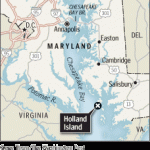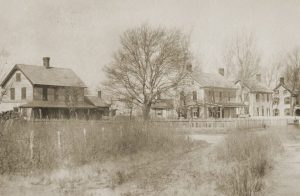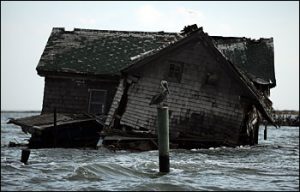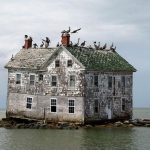
 While islands don’t float and can’t flip over, they are subject to one hazard that can sometimes end with their disappearance…erosion. This isn’t a situation that many of us would ever notice in our lifetime, but on one island…Holland Island, located in the Chesapeake Bay, erosion quickly became a problem. In 1910, Holland Island, considered the most populated island in the Chesapeake Bay, was thriving with 360 residents. Besides historic Victorian homes, there were many other homes, shops, a school, and a church.
While islands don’t float and can’t flip over, they are subject to one hazard that can sometimes end with their disappearance…erosion. This isn’t a situation that many of us would ever notice in our lifetime, but on one island…Holland Island, located in the Chesapeake Bay, erosion quickly became a problem. In 1910, Holland Island, considered the most populated island in the Chesapeake Bay, was thriving with 360 residents. Besides historic Victorian homes, there were many other homes, shops, a school, and a church.
Despite its historic value, erosion gradually ate away at the island which greatly concerned its residents. Erosion just doesn’t care about historic value, sentimental value, or even about people’s lives. It is just a part of nature, and if a piece of ground doesn’t have a solid base, and plenty of vegetation to keep the ground in place, wind, rain, snow, and in this case, water from the bay will eventually erode the ground to a dangerous level. That was the situation that Holland Island found itself in 1910.
In 1914, in an attempt to try to slow the erosive loss of their precious island, the residents had stones shipped in to build walls and tried to even sink ships in an attempt to slow it down, but nothing worked. Finally, giving 
 up, most of the residents tore down their homes and moved inland. Many of the buildings still remained, but the town was largely a ghost town. When a tropical storm hit in 1918, it damaged the church. By 1922, the few people who had stayed finally left after the church closed down. One man, in 1995, tried for 15 years to preserve the island, spending a fortune, all to no avail. Finally, the last house crumbled and fell, ending the fight to save Holland Island.
up, most of the residents tore down their homes and moved inland. Many of the buildings still remained, but the town was largely a ghost town. When a tropical storm hit in 1918, it damaged the church. By 1922, the few people who had stayed finally left after the church closed down. One man, in 1995, tried for 15 years to preserve the island, spending a fortune, all to no avail. Finally, the last house crumbled and fell, ending the fight to save Holland Island.


One Response to The Last House